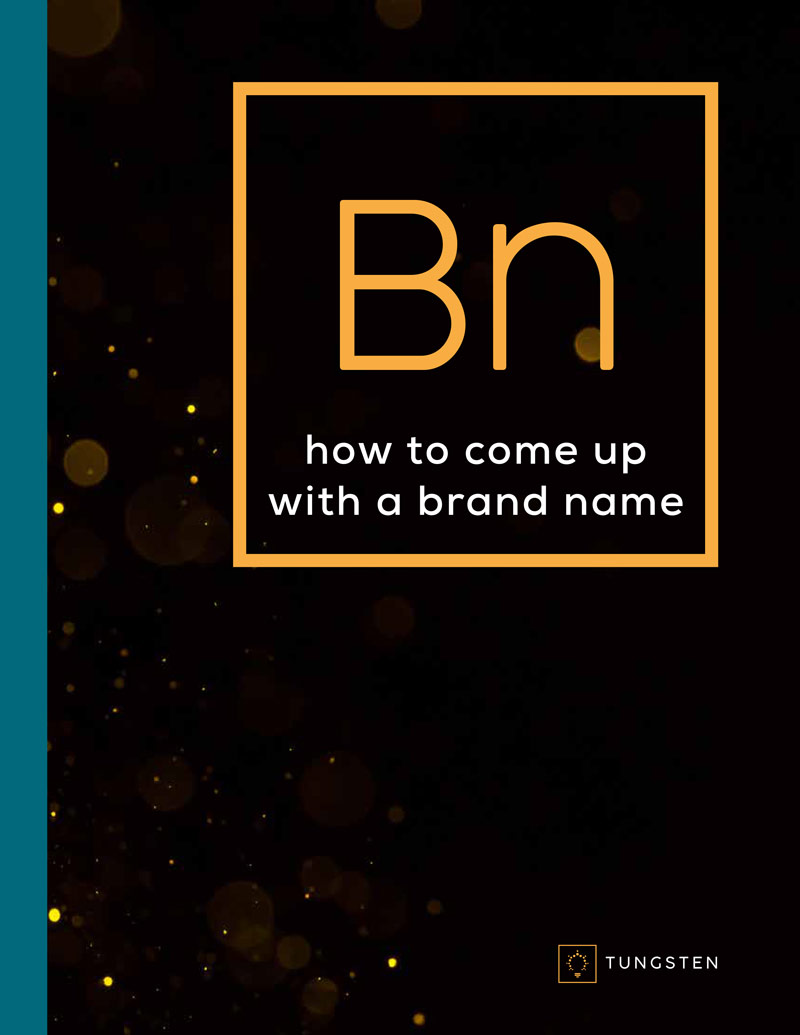Is Your Business Name Causing More Harm Than Good? Here’s How You Can Know It’s Time To Rebrand Your Company.
There comes a time in the life cycle of many established businesses when the owner wonders if the original company name might be doing more harm than good. But how can one know for sure? Maybe it’s just the economy, or the competition, or a change in staff? Well, now there’s a gauge, a metric, seven surefire indicators to help determine if it’s time to rebrand your company.
Symptom 1: The Guessing Game (Explaining what business you’re really in)
Of all the reasons to rebrand your company, this is the most urgent. Worse than having a name that leads nowhere is a name that leads in the wrong direction! Think of it this way, instead of starting off in neutral with a coined name, this type of name has customers going in reverse. You actually have to arrest them, correct the misperception, and then re-explain what it is that you really do! When I visited my physical therapist for weekend warrior issues, she shared that her company name confuses some of her clients. The Center for Perfect Balance leads many to think she has a yoga studio or a clinic for ear/balance disorders.
Symptom 2: “We’re More Than… (fill in the blank)”
This one is classic. A company becomes synonymous with its core product offering and then wants to expand. The business name is often directly tied to that product and rather than a company rebrand, the company spends massive advertising dollars in a vain attempt to educate the public that they are more than what they are known for. Burlington Coat Factory had ads that used to say “We’re more than just coats.” The problem with this is that it tells you nothing about what the “more” is, and apologizes for a major revenue stream. Examples of companies with this syndrome are CompUSA (more than computers), Radio Shack (more than radios), and Pizza Hut (not just pizza). Recently I saw a sign on a Pizza Hut store that said “Wings USA!” as if that one sign would reinvent what people thought about Pizza Hut. Radio Shack now wants us to call them “The Shack.”
Symptom 3: Trademark? What Trademark?
This is a tough one. Some owners actually like their names but they get that dreaded “cease and desist” letter from a not-so-nice competitor. Or perhaps not even a competitor but just someone with a famous mark. Rather than pay the legal fees to fight it, it’s sometimes better to use those funds to better define, differentiate and showcase your company. And if a competitor is indeed that close in name or spelling, do you really want that type of confusion? Even when you can get by, do you really want to be Office Max with an Office Depot on the opposite corner? So before you write a big check to the legal team, you might want to invest that money in a brand identity that will set you apart from the masses.
So before you write a big check to the legal team, you might want to invest that money in a brand identity that will set you apart from the masses.
Symptom 4: We’re Not in Kansas Anymore (Geographically Limited Names)
When I say “We’re not in Kansas anymore…” that is literally what one client shared when he came to us for a company rebrand. His sports memorabilia store was called Kansas Sampler, a great name if you are a Chiefs fan. But he was heading to Texas, so the name would have been run out of town on a rail in the Lone Star Republic. He became RallyHouse, a place to find all the things you want to root for your team. Geographically named businesses are perhaps the most common rebranding need since many eager entrepreneurs don’t envision themselves five years down the road in numerous markets.
Symptom 5: Bad company (When You Share Your Name With Unsavory Subjects)
News flash. Sometimes life isn’t fair. Your company name suddenly shares the spotlight with a notorious criminal or sensational news story. A sports drink came out in 2005 called Tsunami (Unfortunate timing to say the least). We had a client that shared a name with a famous (or should we say infamous) prison. The proverbial “perception is reality” takes over and you find yourself defending your name, or hoping time will eventually work in your favor. If you have millions of dollars then you can over-brand these types of issues (witness iPad, and Wii), but few companies have that type of money and marketing hype on their side. For most business owners, it makes sense to start with a fresh impression that opens doors rather than shut them.
Symptom 6: Vanilla Anyone? (The Generic Brand Name Curse)
A number of new business owners believe the most effective way to advertise their business is to make the name a literal description. At first glance, this would seem to make sense. But it backfires for the same reason that should make it succeed. These names are so straightforward that thousands of other business owners have thought of the same idea. And to make matters worse, they merely describe what you do, not how you do it. One client of ours Big Earth was formerly known as Wholesale Landscape Supply. The problem was, the name sounded like a yellow page heading. Clients couldn’t remember it. It sounded more like a description of the company than the name itself.
Symptom 7: Big Brother (When A Brand You Sell Overpowers Your Own)
This is an insidious problem that can sneak up on a business owner. The popular brand product they’ve sold for years becomes so famous that it overshadows their own bland company identity. Then there’s a power struggle. The owner of the product line begins to dictate terms, or insist on more floor space, or demand a certain increase in sales and inventory. If not, the big brand name might get pulled out or given to a competitor.
Be sure to think through your long term business strategy (including your exit strategy) when deciding whether to invest your marketing dollars into an existing product or to create your own high powered, high profile brand.
I’ve witnessed companies that took easy advertising co-op money to promote their key product lines, to the point that those product lines took over their identity. And I’ve seen those same product brands then move on, leaving the owner with little to no brand equity. Riding on the coattails of an established brand definitely has its pluses and minuses. Be sure to think through your long-term business strategy (including your exit strategy) when deciding whether to invest your marketing dollars into an existing product or to create your own high powered high profile brand.
Whether you call them the seven signs or the seven sins, beware these dead-end traps. Rather than explaining, battling, and marketing your way around them, consider regrouping and rebranding your company for continued growth and success. For a no-obligation assessment of your branding needs, fill our Getting Started form.
Related posts on company rebranding:
Changing Your Company Name – 5 Steps to Rebranding Your Business
Rebranding vs. Repositioning – The Right Strategy Makes All The Difference
The Benefits of Rebranding Your Company – Improve Your Image and Your Bottom Line
About the author: With over twenty-five years of company naming and branding expertise, Tungsten founder Phil Davis is a marketing and advertising veteran, having personally named over 250 companies, products and services worldwide. As a sought-after branding expert, Phil has been quoted in The Wall Street Journal, Inc.com, Businessweek, Entrepreneur, and Newsday.
BY Phil Davis
Brand Naming Expert
With over twenty-five years of company naming and branding expertise, Tungsten founder Phil Davis is a marketing and advertising veteran, having personally named over 250 companies, products and services worldwide. As a sought-after naming expert, Phil has been quoted in The Wall Street Journal, Inc.com, Businessweek, Entrepreneur, and Newsday.




